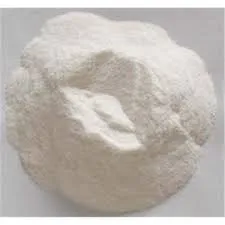
Nov . 05, 2024 21:16 Back to list
hydroxyethyl cellulose solubility
Hydroxyethyl Cellulose Solubility and Applications
Hydroxyethyl cellulose (HEC) is a water-soluble polymer derived from cellulose, a natural polymer found in the cell walls of plants. Due to its unique chemical structure and properties, HEC has become an essential ingredient across various industries, including pharmaceuticals, cosmetics, food, and construction. Understanding its solubility is crucial for optimizing its performance in different applications.
Chemical Structure and Properties
HEC is formed by the ethylation of cellulose, where some of the hydroxyl groups in the cellulose polymer are replaced with hydroxyethyl groups. This modification enhances the solubility of cellulose in water, making HEC a versatile thickener, stabilizer, and film-forming agent. The solubility of HEC is influenced by several factors, including molecular weight, concentration, temperature, and the presence of electrolytes.
HEC is known for its ability to dissolve in cold water, forming a clear and viscous solution. This solubility is significantly advantageous in many applications. HEC acts as a thickener in cosmetic formulations, providing a smooth and desirable texture. In pharmaceuticals, it is often used as a binder in tablets and as a stabilizer in suspensions.
Solubility Characteristics
The solubility of HEC is generally good across a wide range of pH levels, making it suitable for various formulations. Its solubility increases with temperature, which can be an essential factor in processing conditions. However, it is essential to note that excessively high temperatures can lead to thermal degradation of the polymer, affecting its viscosity and performance.
One unique characteristic of HEC is its ability to form gels when exposed to certain conditions, such as increased concentrations or specific ionic strengths. This gel formation can be harnessed in applications where a gel-like consistency is desirable, such as in personal care products for controlled release or enhanced texture.
hydroxyethyl cellulose solubility

Additionally, HEC exhibits low toxicity and is biodegradable, making it an eco-friendly choice for many formulations. This characteristic is especially relevant in today's environmentally conscious market, where consumers increasingly seek sustainable products.
Applications of Hydroxyethyl Cellulose
In the cosmetics industry, HEC is extensively used in lotions, creams, and gels. Its thickening properties improve viscosity and provide stability to formulations, preventing separation of ingredients. Moreover, HEC enhances the sensory characteristics of products, resulting in a more appealing sensory experience for consumers.
In pharmaceuticals, HEC plays a crucial role as a binder in tablet formulations and as a thickening agent in suspensions and emulsions. Its ability to ensure uniformity and stability is vital in maintaining the efficacy of pharmaceutical products. HEC’s gel-forming ability can be applied in ocular drugs, where controlled release is critical for therapeutic efficacy.
In the food industry, HEC serves as a thickener and stabilizer, particularly in sauces, dressings, and other food products. It helps maintain texture and consistency without compromising taste, making it a popular ingredient in the formulation of various food items.
The construction industry also benefits from HEC, where it is used as an additive in cement and mortar to improve workability, adhesion, and water retention. This application enhances the performance of construction materials, making them more effective under various conditions.
Conclusion
Hydroxyethyl cellulose is a versatile and valuable polymer known for its excellent solubility and functionality. Its applications span multiple industries, underscoring its importance in both everyday products and specialized formulations. As research continues to explore and exploit the properties of HEC, its role in innovation and sustainability is poised to grow even further. Understanding the solubility characteristics of HEC not only helps formulators create effective products but also aids in the development of environmentally friendly and sustainable solutions in today's marketplace.
-
Versatile Hpmc Uses in Different Industries
NewsJun.19,2025
-
Redispersible Powder's Role in Enhancing Durability of Construction Products
NewsJun.19,2025
-
Hydroxyethyl Cellulose Applications Driving Green Industrial Processes
NewsJun.19,2025
-
Exploring Different Redispersible Polymer Powder
NewsJun.19,2025
-
Choosing the Right Mortar Bonding Agent
NewsJun.19,2025
-
Applications and Significance of China Hpmc in Modern Industries
NewsJun.19,2025







